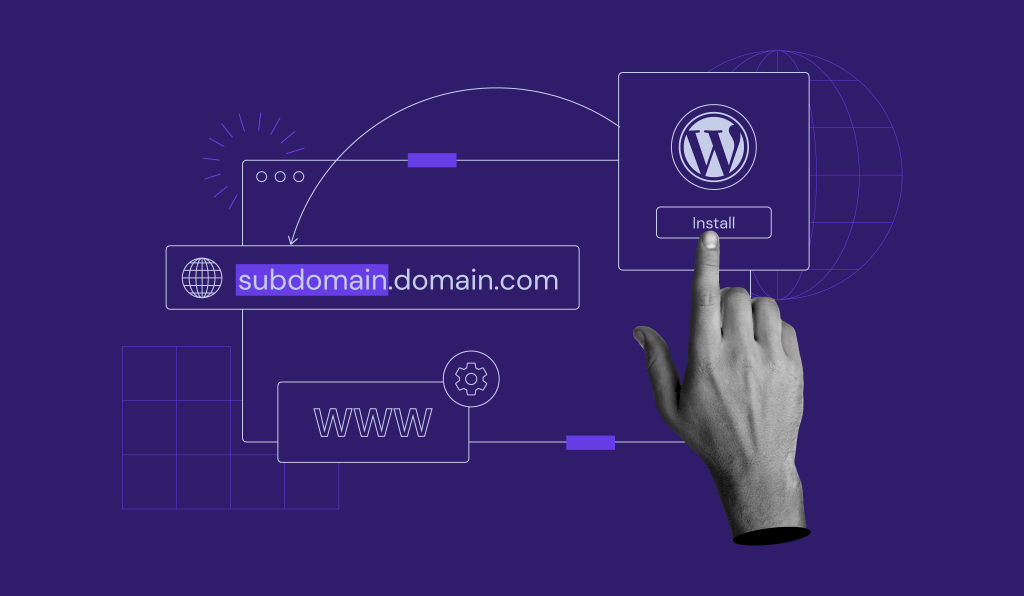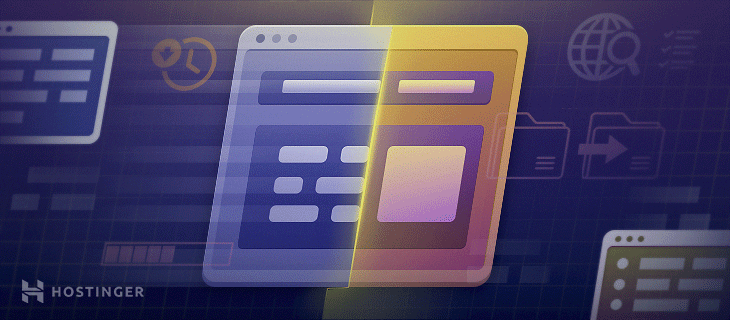All Hostinger Tutorials
Learn more about web hosting, VPS, domain names, SSL, and more with our newest releases.
How to make a website from scratch in 12 steps
A website is a digital space on the internet for sharing information, showcasing details about yourself, your business, or a cause. It’s a...
How to check your website’s PHP Error log
Any website can go through some troubles and stop working. When this happens, it will display an error message to you and the visitors. Unfortunately,...
How to install WordPress on subdomain: 2 proven methods
A subdomain is a part of a domain name used for creating independent websites that serve as extensions of the main website. They typically house...
How to remove directory in Linux: deleting files and folders using rmdir and rm commands
Learning the Linux command line is essential for system administrators, as it’s widely used for virtual private server hosting. While you can use a...
Website builder vs WordPress: choosing the right platform for you
A website is an essential element for the success of a business as it attracts potential customers and generates sales. To create websites efficiently...
How to solve ERR_NAME_NOT_RESOLVED in 6 steps
ERR_NAME_NOT_RESOLVED is a common domain name system (DNS) error that prevents your browser from accessing a website. It means your computer could not...
How to fix the PR_END_OF_FILE_ERROR secure connection Error on firefox
Encountering PR_END_OF_FILE_ERROR in your Mozilla Firefox browser is frustrating, especially when you’re trying to access a secure website....
How to fix the HTTP 302 error
The HTTP 302 error occurs when the requested resource has been temporarily moved to a new location. The system automatically redirects visitors to a...
What is a web server?
A web server is computer software and hardware that stores website files and delivers them to a user’s browser over the internet. It’s the...
Optimizing WordPress on pagespeed and GTmetrix with litespeed cache plugin
Website speed optimization should be a top priority for every website owner as it directly impacts WordPress SEO. Additionally, the longer a website...
What is a guest post? everything you need to know
A guest post is a content piece a blogger writes for someone else’s blog. This is typically used as a marketing tactic to: While guest posting has...
HTTP status codes: full list and explanations
HTTP response codes are three-digit numbers sent by a server to indicate the status of a browser’s request. Managed by the Internet Assigned...
How to fix ERR_CACHE_MISS error in Google Chrome: 7 proven methods
The ERR_CACHE_MISS error in Google Chrome appears when a web browser’s caching system is malfunctioning. Your browser saves parts of...
WordPress plugins: how many is too many?
Plugins are useful for every WordPress site, but having too many can be detrimental to the website’s performance. However, it is not the number of...
Does migration affect my website SEO?
If the website migration is well planned and performed, it won’t affect your website’s SEO in any way. However, a lot can go wrong when migrating...
WordPress changes not showing? three methods to fix WordPress not updating
Making updates to a WordPress site and not seeing any changes can be irritating. Some situations you might have encountered are: The most common cause...
17 best code editors for developers in 2025
Code editors are tools used by programmers and web developers to write and edit code. They offer features such as auto-completion, syntax...
How to sell website maintenance services? What to include in the package and pro tips
Businesses increasingly use websites to promote their services and products. Thus, they need to be maintained regularly to ensure a good user...
How to migrate my website without any downtime?
The biggest risk concerning a website migration is downtime. It can seriously affect your traffic and conversions, not to mention the overall...
What is cPanel, how to use it, and more
cPanel is one of the most popular control panels among web developers and hosting companies. It is typically paired with WHM (Web Host Manager) –...
How to install Moodle™: 4 methods
Moodle™ is one of the most popular learning management systems (LMS), with more than 272 million users worldwide. It provides a personalized online...
How to fix the 503 Service Unavailable error
The 503 Service Unavailable error is a temporary HTTP response status code indicating that the server can’t handle the request at the moment. It...















